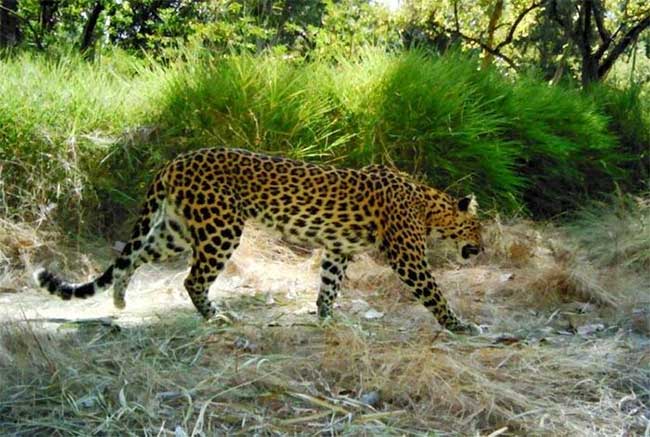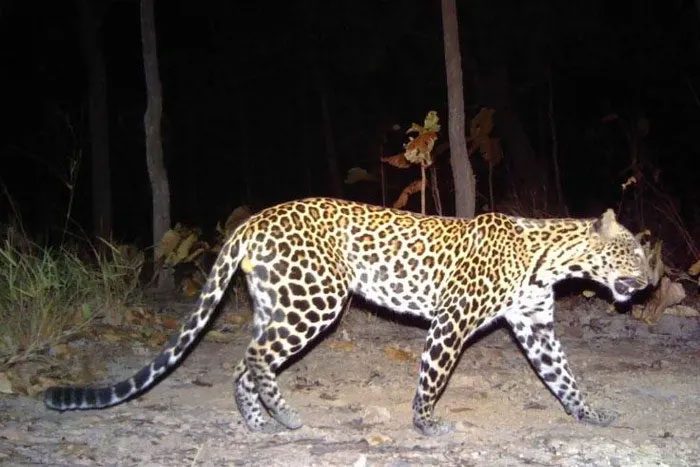The Indochinese leopard is a species on the brink of extinction in Cambodia. Conservationists dedicated to wild cat species have spent over a decade searching for surviving individuals of this leopard species, yielding only…35 individuals. However, since 2021, scientists have failed to find a single specimen.
According to a report from Panthera, a global organization focused on the conservation of wild cats, researchers established hundreds of cameras across two regions in Eastern Cambodia from 2009 to 2019. During this period, only 35 adult Indochinese leopards were detected, and when they conducted further checks in 2021, not a single individual was found.
This has led scientists to conclude that the species is no longer capable of reproducing for future generations, as stated in a report compiled with WildCRU from the University of Oxford and published in the journal Biological Conservation.
Historically, this leopard species once roamed throughout countries in the Indochinese Peninsula—including Vietnam, Cambodia, Laos, Myanmar, Malaysia, Thailand, and parts of southeastern China—but human encroachment has resulted in the destruction of most of its habitats. During the study period, human activity in Cambodia increased by 20 times, leading to a 1,000-fold increase in the likelihood of animals falling into traps. Illegal hunting surged due to demand for wild meat, which is considered a delicacy and a symbol of status among the upper and middle classes in Cambodian cities.

The Indochinese leopard discovered in Srepok Wildlife Sanctuary, the largest protected area in the Eastern Plains Landscape of Cambodia. (Photo: Panthera).
Many hunters also target wild leopards for their thick spotted fur, and habitat destruction has significantly reduced the prey population for this species. The International Wildlife Conservation Fund estimates that there are approximately 12 million traps for wildlife spread across the Indochinese Peninsula, negatively affecting 700 animal species in the region, including Asian elephants and Sumatran rhinos.
Cambodia also faces the highest deforestation rate ever recorded compared to any country since the 1970s, according to the Global Forest Watch, estimating that Cambodia lost about 557,000 hectares of forest in conservation areas from 2001 to 2018.
There is no unified conservation initiative targeting the Indochinese leopard due to a lack of funding, and although law enforcement has intensified efforts to combat illegal hunting over the past decade, the number of illegal wildlife trafficking incidents remains unprecedented. Furthermore, while the leopards are disappearing in Cambodia, the population of leopards in the wild along the border between Thailand and Myanmar is not accurately known and may be as low as 900 individuals, according to Rostro-García.

From 2009 to 2019, scientists recorded 35 adult Indochinese leopards detected in Cambodia. (Photo: Panthera).
Gareth Mann, Director of the Leopard Program at Panthera, stated: “It is unfortunate to witness the Indochinese leopard, a species long forgotten, facing the same grim fate as its relatives, the tigers in Cambodia, Laos, and Vietnam.” Simply punishing poachers is not enough to halt the extinction of wildlife, as researchers call for nationwide efforts to reduce the consumption of wild meat.
“Just as the Indochinese Peninsula has become a hotspot for tiger conservation, it is also where the global community must fully invest efforts to save the leopard, in collaboration with the governments of Thailand, Malaysia, and Myanmar,” said Susana Rostro-García.
The leopard is listed as “vulnerable” on the IUCN Red List of Threatened Species, while the Indochinese leopard is classified as “critically endangered.”


















































